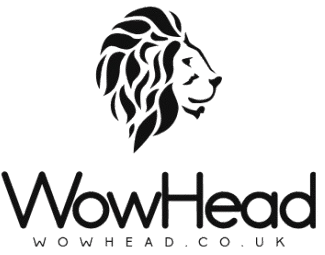 In the kitchen, accuracy is everything. Whether you’re baking a cake, making bread, or preparing a family meal, the success of your recipe often depends on using the right measurements. One of the most common conversions home cooks and bakers face is tablespoons to cups.
In the kitchen, accuracy is everything. Whether you’re baking a cake, making bread, or preparing a family meal, the success of your recipe often depends on using the right measurements. One of the most common conversions home cooks and bakers face is tablespoons to cups.
At first, it might seem simple—after all, they’re both standard units of measurement. But when you’re following a recipe and you only have a tablespoon while the instructions call for cups (or vice versa), knowing the exact conversion can save your dish from disaster.
This article will walk you through everything you need to know about converting tablespoons to cups, why accurate measurement matters, and practical tips for getting it right every time.
Why Measurement Accuracy Matters
Unlike savory cooking, where you can experiment with spices and flavors, baking requires precision. Too much flour and your cake turns dry. Too little sugar, and your cookies lose their sweetness. Measuring correctly ensures consistency and makes sure the final product turns out the way the recipe intended.
That’s where conversion comes in handy. If you don’t have a measuring tablespoons to cups. you can rely on tablespoons instead—provided you know the correct ratio.
Tablespoons to Cups Conversion Basics
Here’s the golden rule you need to remember:
-
1 cup = 16 tablespoons
From this, you can easily figure out other conversions:
-
1/2 cup = 8 tablespoons
-
1/3 cup = 5 tablespoons + 1 teaspoon
-
1/4 cup = 4 tablespoons
-
3/4 cup = 12 tablespoons
-
1/8 cup = 2 tablespoons
Quick Reference Chart
| Cups | Tablespoons |
|---|---|
| 1 cup | 16 tablespoons |
| 3/4 cup | 12 tablespoons |
| 2/3 cup | 10 tablespoons + 2 tsp |
| 1/2 cup | 8 tablespoons |
| 1/3 cup | 5 tablespoons + 1 tsp |
| 1/4 cup | 4 tablespoons |
| 1/8 cup | 2 tablespoons |
This chart is especially useful when scaling recipes up or down.
Understanding Measurement Systems
It’s important to note that not all tablespoons are created equal. Different countries use slightly different measurements:
-
United States: 1 tablespoon = 14.79 milliliters
-
United Kingdom & Canada: 1 tablespoon = 15 milliliters
-
Australia: 1 tablespoon = 20 milliliters
This difference may not matter much in cooking, but in baking—where even a few milliliters can change the texture—it’s important to be aware of.
Practical Examples of Conversions
Let’s look at some real-life cooking situations:
-
Example 1: A recipe calls for 1/2 cup of butter. If you don’t have a cup measurement handy, you’ll need 8 tablespoons of butter.
-
Example 2: You want to add 3/4 cup of sugar, but only have a tablespoon. That equals 12 tablespoons of sugar.
-
Example 3: A recipe asks for 1/3 cup of cocoa powder. That would be 5 tablespoons and 1 teaspoon.
By remembering the base conversion (1 cup = 16 tablespoons), you can quickly calculate the rest.
Measuring Dry vs. Liquid Ingredients
Another important detail is the difference between measuring dry and liquid ingredients.
-
Dry Ingredients (flour, sugar, cocoa) should be scooped and leveled with a knife to ensure accuracy.
-
Wet Ingredients (milk, oil, water) should be measured in liquid measuring cups, but if converting to tablespoons, make sure to fill each spoon fully.
This ensures that the conversion remains consistent and accurate.
Tips for Accurate Measuring
Even when you know the conversions, the way you measure matters. Here are some pro tips:
-
Level Off Dry Ingredients – Don’t heap tablespoons. Always use a straight edge to level them.
-
Don’t Pack Unless Needed – Only ingredients like brown sugar should be packed into the spoon.
-
Check Consistency – Liquids should be measured at eye level in a liquid measuring cup.
-
Use Standard Tools – Avoid using silverware spoons from the dining table—they are not accurate.
Why You Might Need Conversions
There are several situations where converting tablespoons to cups becomes useful:
-
Scaling Recipes – If you want to double or halve a recipe, conversions make it easier.
-
Missing Tools – Sometimes you don’t have the right measuring cup handy, so tablespoons help.
-
International Recipes – Many cookbooks and blogs use different measurement systems.
-
Batch Cooking – Whether you’re cooking for one or for a crowd, conversions keep recipes accurate.
Beyond Tablespoons to Cups: Other Useful Conversions
To make cooking even easier, here are some additional conversions to remember:
-
1 tablespoon = 3 teaspoons
-
1 cup = 8 fluid ounces
-
1 pint = 2 cups
-
1 quart = 4 cups
-
1 gallon = 16 cups
These conversions, along with tablespoons to cups, form the foundation of kitchen math.
Tips for Remembering Conversions
You don’t always need a chart if you remember these simple rules:
-
Think of 1 cup as 16 tablespoons.
-
Half of that is 8 tablespoons (1/2 cup).
-
A quarter is 4 tablespoons (1/4 cup).
-
Two tablespoons equal 1/8 cup.
With these basics in mind, you can quickly calculate most recipe needs.
Digital Tools for Conversions
If math isn’t your strong suit, don’t worry—there are plenty of apps and online calculators that instantly convert cups to tablespoons and vice versa. You can also use smart kitchen scales that measure in multiple units, making the process even simpler.
Conclusion
Converting tablespoons to cups may seem like a small detail, but it can make a big difference in the outcome of your recipes. Whether you’re baking a delicate cake or preparing a savory dish, precision ensures consistency and success.
By remembering that 1 cup equals 16 tablespoons, and using the quick conversion chart provided, you’ll never be left guessing in the kitchen. Combine that with proper measuring techniques, and you’ll be able to handle any recipe with confidence.
Cooking is both an art and a science. The art comes from creativity, but the science comes from accurate measurements. Master both, and you’ll always create something delicious.


